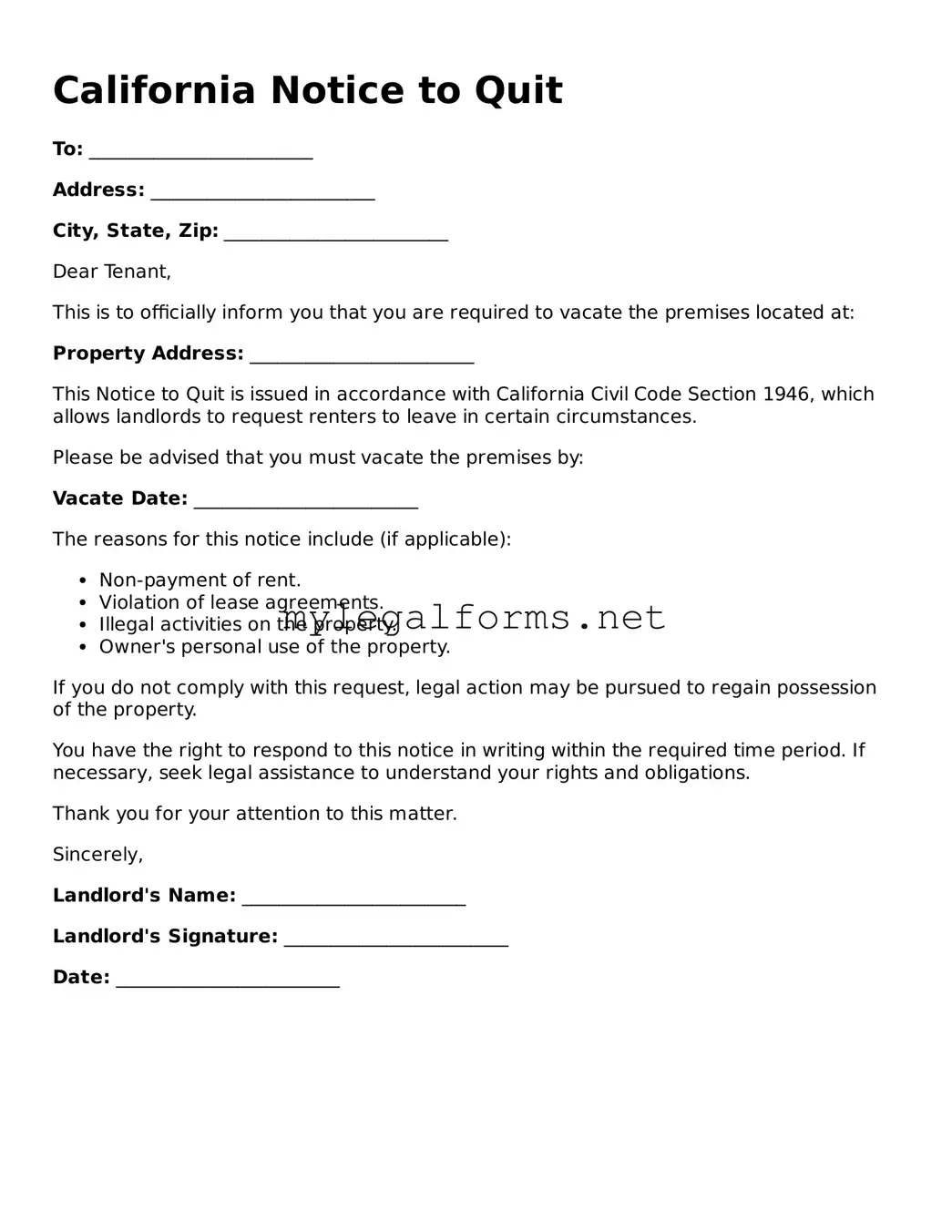California Notice to Quit
To: ________________________
Address: ________________________
City, State, Zip: ________________________
Dear Tenant,
This is to officially inform you that you are required to vacate the premises located at:
Property Address: ________________________
This Notice to Quit is issued in accordance with California Civil Code Section 1946, which allows landlords to request renters to leave in certain circumstances.
Please be advised that you must vacate the premises by:
Vacate Date: ________________________
The reasons for this notice include (if applicable):
- Non-payment of rent.
- Violation of lease agreements.
- Illegal activities on the property.
- Owner's personal use of the property.
If you do not comply with this request, legal action may be pursued to regain possession of the property.
You have the right to respond to this notice in writing within the required time period. If necessary, seek legal assistance to understand your rights and obligations.
Thank you for your attention to this matter.
Sincerely,
Landlord's Name: ________________________
Landlord's Signature: ________________________
Date: ________________________
